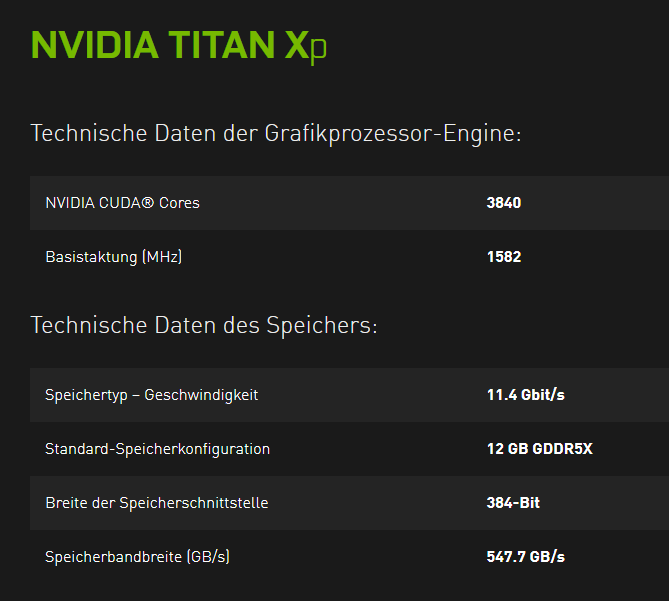Lucky are the guys who have bought a TitanX .....
1080TI vs TitanX .....
- 3854 SP vs 3854SP
- 11.5 vs 11 Tflops ..
- 11GB memory vs 12GB GDDR5x
- 484 GB/s bandwith vs 480 GB/s
- 699$ vs 1200$
If i was own a Titan XP, i will ask for a refund.. I dont even know why Nividia have change the spec on Vram, they could have just do a price cut. ( why do complicate when you can do simple.. )
TitanXP will be unsellable on Amazon or Ebay now ..
1080TI vs TitanX .....
- 3854 SP vs 3854SP
- 11.5 vs 11 Tflops ..
- 11GB memory vs 12GB GDDR5x
- 484 GB/s bandwith vs 480 GB/s
- 699$ vs 1200$
If i was own a Titan XP, i will ask for a refund.. I dont even know why Nividia have change the spec on Vram, they could have just do a price cut. ( why do complicate when you can do simple.. )
TitanXP will be unsellable on Amazon or Ebay now ..
Last edited:

